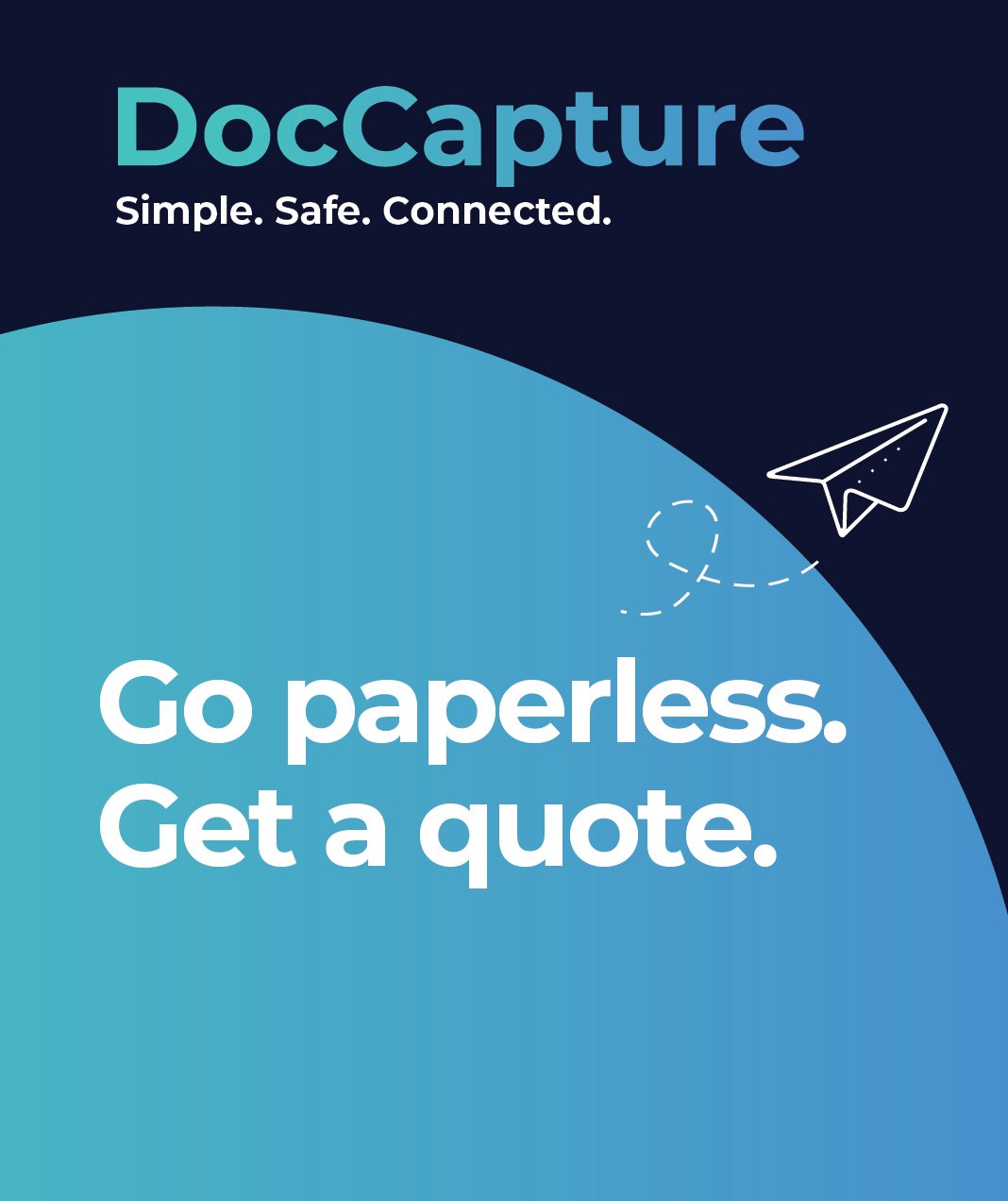Bureaucratic Resistance to Digital Transformation in Public Offices
Table of contents
Across federal, state, and local agencies, government leaders are under mounting pressure to modernize outdated workflows. Citizens increasingly expect faster, more transparent services; legislators demand compliance with evolving regulations; and internal teams face the inefficiencies of paper-based processes that slow down even routine tasks. Yet despite the urgency, many public offices struggle to begin their digital transformation journey.
The biggest obstacle? Deep-seated cultural and bureaucratic resistance to change. Government staff worry about disruptions to established procedures, job security, or the complexity of new systems. Leadership teams often face tight budgets, long procurement cycles, and concerns over data security — all of which can stall digital initiatives before they start.
But there is a practical first step: document scanning. By digitizing existing paper records, agencies can unlock immediate efficiency and compliance gains without the upheaval of a full system overhaul. Document scanning offers a low-disruption, cost-effective gateway to modernizing workflows — one that helps public offices gradually build a foundation for broader digital transformation.
The State of Digital Transformation in Government
Despite widespread recognition of the need to modernize, government agencies lag far behind the private sector in digital adoption. A 2023 Deloitte survey found that only 30% of public sector leaders reported significant progress toward digital transformation initiatives, compared to 68% in commercial organizations. This digital gap undermines efficiency, citizen satisfaction, and compliance — and it leaves agencies vulnerable to data loss or security breaches inherent in paper-based systems.
Why do public offices struggle to advance? Several factors stand out:
-
Entrenched processes and culture: Many workflows are built around paper documents, with staff accustomed to physical files for decades. Change can feel threatening or unnecessary.
-
Rigid budget cycles: Funding for technology upgrades must often be approved years in advance, limiting flexibility.
-
Security fears: Leaders worry digital systems will increase the risk of data breaches, even though paper records can be equally or more vulnerable to loss or unauthorized access.
-
Integration complexities: Government agencies often rely on legacy systems that don’t easily connect with modern software.
However, as explored in Modernizing Government: The Role of Document Scanning, many agencies are finding that starting with document scanning helps overcome these hurdles. By digitizing critical records first, agencies can sidestep massive system replacements and immediately improve their ability to retrieve, share, and secure information.
Document scanning provides an accessible entry point into digital workflows, enabling agencies to start small and demonstrate early wins — a proven way to build buy-in across departments and leadership teams.
Why Document Scanning is the Ideal Starting Point
For many government agencies, diving straight into large-scale digital overhauls can feel overwhelming — both culturally and financially. Document scanning, however, provides a practical, low-risk first step toward modernization.
By converting existing paper documents into secure, digital formats, agencies can:
-
Streamline workflows by making records instantly searchable and shareable, reducing the time staff spend locating files.
-
Enhance data security through controlled digital access, secure backups, and audit trails that paper simply can’t provide.
-
Simplify compliance with regulations like FOIA, HIPAA, and state-specific records laws by enabling easier tracking, retrieval, and retention management.
Because scanning integrates with existing systems, there’s no need to replace core software or retrain staff on entirely new processes right away. As highlighted in Government Document Scanning, scanning services can digitize HR files, contracts, permits, or case files, and feed them directly into current document management systems or secure cloud repositories.
Unlike new software rollouts that demand lengthy training and risk immediate disruption, scanning digitizes what already exists — so employees can keep working while processes quietly modernize in the background. This phased approach reduces resistance by avoiding a “big bang” shift, while still delivering immediate wins in efficiency and transparency.
Overcoming Resistance to Change
Change in government environments can trigger deep anxiety. Employees may fear that digitization will render their roles obsolete, introduce overly complex technology, or open the door to data breaches. Leadership teams, meanwhile, worry about service disruptions, pushback from staff, or unanticipated costs.
Document scanning addresses these fears head-on:
-
Job security concerns: Scanning doesn’t eliminate jobs — it empowers staff by freeing them from time-consuming tasks like shuffling paper and hunting for files, letting them focus on higher-value work.
-
Complexity fears: Scanning services work within current processes. Documents are digitized and organized without requiring staff to learn new systems overnight, avoiding steep learning curves.
-
Data breach worries: Professional scanning providers, like DocCapture, follow strict security protocols, including chain-of-custody tracking, secure transport, encryption, and compliance with federal and state data privacy laws. Digital files can even improve security over paper, as they can be protected by access controls and audit logs.
Scanning also integrates with existing systems, meaning agencies don’t have to uproot or replace core tools right away. This step-by-step approach builds confidence among employees and leaders alike, helping overcome cultural resistance by demonstrating quick, visible improvements without disrupting day-to-day operations.
For more strategies on addressing concerns and improving efficiency, see Efficiency in Government: How Document Scanning Helps.
Security and Compliance Benefits
One of the most compelling reasons for government agencies to digitize documents is the opportunity to improve both security and compliance. Paper records are inherently vulnerable to loss, theft, fire, flood, or unauthorized access. In contrast, scanned digital documents enable far greater control and visibility.
Key security and compliance advantages of document scanning include:
-
Controlled access: Digital documents can be restricted by user roles and permissions, limiting who can view, edit, or share sensitive records.
-
Audit trails: Every action — from opening a file to editing or sharing — can be logged and traced, supporting transparency and accountability.
-
Improved retention management: Digital systems can automate retention schedules, ensuring compliance with federal, state, and local records laws.
-
Secure backups: Scanned documents can be encrypted and backed up offsite or in the cloud, protecting data from physical disasters.
Professional scanning services follow strict security protocols, including background checks for staff, secure transportation of documents, and adherence to compliance standards such as CJIS, HIPAA, or state-specific data privacy regulations. This dramatically reduces the risk of unauthorized access compared to paper files left on desks or in unsecured filing cabinets.
For example, in Scanning Government Records, agencies have used scanning to quickly respond to Freedom of Information Act (FOIA) requests, providing digital records that are easy to search and redact while maintaining full compliance.
By digitizing documents, public offices not only protect sensitive information but also make it easier to prove compliance during audits — a critical benefit in an era of increasing regulatory scrutiny.
Real-World Applications
Document scanning isn’t just theoretical — it’s already helping government agencies across the country solve practical problems. Here are a few examples of how scanning can make an immediate impact:
-
Building plans and permits: Departments of public works or planning can scan large-format blueprints and permits, improving access for staff and contractors while protecting valuable documents from loss or damage. Learn more in Large-Format Scanning Improves Access to Government Building Information.
-
Human resources files: Scanning employee records ensures agencies can quickly locate hiring documents, evaluations, or disciplinary records, streamlining responses to internal audits or legal inquiries.
-
Contracts and legal documents: Digitized contracts allow legal teams to retrieve agreements instantly, track changes, and stay compliant with procurement rules.
-
Disaster recovery planning: Scanned documents provide agencies with digital backups, safeguarding critical records against fire, floods, or other emergencies.
-
FOIA and public records requests: By making documents searchable and sortable, agencies can fulfill information requests faster and with greater accuracy, improving transparency and avoiding penalties for non-compliance.
These applications directly address pressure points like citizen expectations for fast service, leadership demands for better compliance, and the need for continuity planning. Whether it’s scanning tax records for a county office or archiving historical zoning documents, scanning can be tailored to meet specific departmental needs without requiring a complete IT overhaul.
For more case-specific insights, see Document Scanning for State and County Government Records and Document Scanning in Local Government.
Taking the Next Step Toward Full Digital Transformation
Document scanning isn’t the end of the digital journey — it’s the foundation. By digitizing paper records, agencies create a critical first layer of structured, accessible data that can feed future initiatives like electronic document management systems (EDMS), workflow automation, and advanced analytics.
Once documents are scanned and securely stored, agencies can:
-
Automate workflows: Route digitized records through approval processes, cutting processing times from weeks to days.
-
Integrate with existing systems: Scanned documents can be linked to case management, permitting, or HR software, extending the value of current IT investments.
-
Enable remote work: Digital records support flexible work arrangements by allowing staff to securely access files from anywhere.
-
Lay the groundwork for AI tools: With searchable digital documents, agencies can eventually deploy artificial intelligence to analyze data, detect trends, and improve decision-making.
Importantly, agencies don’t need to leap into a massive overhaul overnight. A gradual, phased approach — starting with scanning and moving toward broader process improvements — reduces risk, spreads costs over time, and gives staff the space to adapt.
This step-by-step path aligns with best practices shared in Government Departments and Document Imaging Services, where agencies have successfully transitioned to more efficient operations by building on an initial scanning effort.
Conclusion
Government agencies face growing pressure to modernize — but that doesn’t mean they need to overhaul their entire IT infrastructure overnight. Document scanning offers a practical, low-disruption first step toward digital transformation, delivering immediate gains in efficiency, security, and compliance while laying the foundation for broader modernization initiatives.
By starting small and demonstrating quick wins, technology leaders can overcome resistance, build trust across teams, and show stakeholders the tangible benefits of digitization. Whether you need to improve response times for FOIA requests, protect critical records from disaster, or simply make everyday processes more efficient, scanning is the gateway to a smarter, more responsive government office.
Ready to see how document scanning can fit into your agency’s digital strategy? Learn more about Government Document Scanning or fill out our “get a quote” form today to start your journey toward efficient, secure digital workflows with DocCapture.
Share this
You May Also Like
These Related Stories

Overcoming Resistance to Change in Government Digitization Efforts

Overcoming Bureaucratic Resistance Through Digital Transformation

